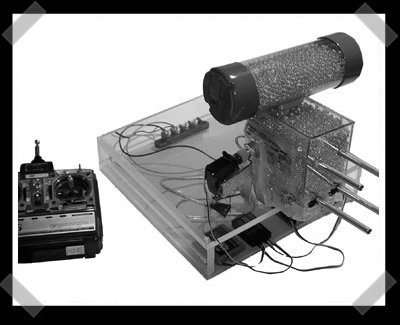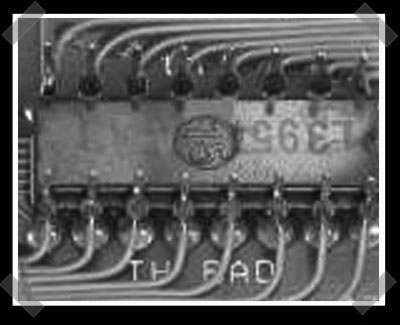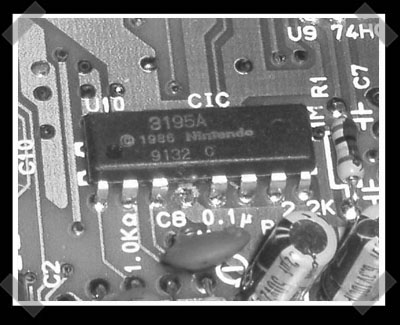
[nicolas büchi] sent in his groups latest project at Zurich University. This innocent pillow interacts with the user based on current light conditions and proximity sensing(pressure). The project pages are in German, but the video demonstration explains it. I like the idea of a vibrating pillow alarm clock – as long as you don’t loose it during the night. It reminds me of Clocky – which is actually for sale now.
Misc Hacks4186 Articles
Airsoft Turret 2.0

[Jared] posted the latest version of his remote control airsoft gun. The new one allows USB and R/C control. It’s got four seperate firing mechanisms, a laser and uses a pair of servos for motion… and lots of ammo. Whatever you do, don’t make fun of [Jared]. They’ll have video up on the site after a couple of days to save bandwidth.
(Just a note: embed youtube or netscape videos and you’ll have video and save your bandwidth.)
Circuit Board Repair

[Wayne] sent along this interesting read on circuit board repair. Even if you’re not uh, repairing, it’s interesting to get some ideas for modification techniques. Pictured is a DIP IC that’s been placed upside-down over the old one with a set of jumper wires. I can only aspire to produce solder joints that look that nice. Good stuff.
Just so the Unofficial Team-Hack-A-Day guys don’t crucify me, they too have been making their own shirts. Thanks [mastershake916].
Aww, They Like Us. (DIY HAD T-shirts)

Over on the Ben Heck forums, moderator G-Force made his own Hack-A-Day T-shirt. I dunno guys, do we need to start selling them? In the past, our swag has been by give away only. Thanks [Marshall]
It’s been a couple of exhausting weeks since the deadline for the Design Challenge. I’m going to finish up going through the entries and we should have a winner sometime next week.
Optoisolated Xmas Light Control

[buzzkill] brought this crazy christmas light controller to my attention. The hack is pretty neat. The potiometers in several standard dimmers were replaced with photo-resistors. When squares of the screen are lit, the dimmer is activated. In essence, it’s a cheap optoisolator for controlling AC power. The software that generates the interface appears to be sound actuated once it’s programmed by the user.
Oldschool NES ‘repair’ How-to

[sebastian] sent in his NES ‘repair’ how-to. (coral cache) It’s more of a guide to modding the NES for more user friendly operation. Emulators and a USB game pad usually do the job for me, but there’s nothing quite like the original hardware. Hmm, I just ran across my NES advantage joystick earlier today.
JScanlogAlert Hardware Network Monitor

[Jose] sent me this interesting little project. JScanlogAlert is a combination of hardware and Java software designed to monitor your network for undesired traffic. (looks like fun for capture the flag competitions.) The hardware is simple – the data lines of a parallel port are used to trigger LEDs that signify the network state.










